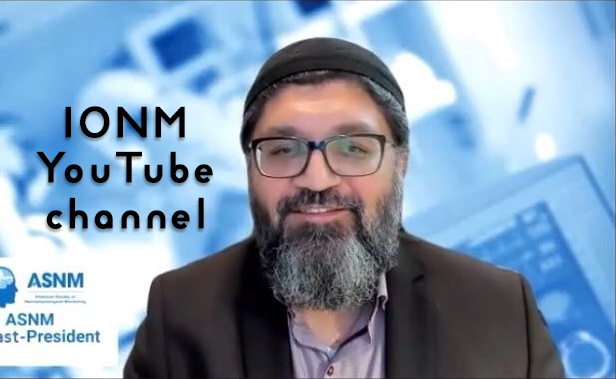Exploring the Efficacy of Hypoglossal Nerve Monitoring and Stimulation in Treating Obstructive Sleep Apnea
DOI:
https://doi.org/10.5281/zenodo.10214346Keywords:
OSA, apnea, obstructive sleep apnea, hypoglossal nerve, emgAbstract
Sleep disorders are a widespread health concern that affects millions of people around the world. Common sleep disorders include insomnia, obstructive sleep apnea, restless legs syndrome, and narcolepsy. Insomnia is characterized by difficulties falling or staying asleep and can be acute or chronic. Obstructive sleep apnea causes repeated breathing pauses during sleep due to airway blockages, which can result in disrupted sleep and daytime sleepiness. Restless legs syndrome causes unpleasant leg sensations and an urge to move them, often at night, disrupting sleep onset. Narcolepsy involves excessive daytime sleepiness and sudden sleep attacks and is caused by a lack of the hypocretin neuropeptide that promotes wakefulness. The treatment of sleep disorders varies depending on the specific condition. Cognitive behavioral therapy is often used to treat insomnia by improving sleep habits and modifying thoughts that interfere with sleep. Medications like benzodiazepines, nonbenzodiazepines, or melatonin may also be prescribed temporarily for insomnia. Continuous positive airway pressure therapy is the standard treatment for obstructive sleep apnea, which involves wearing a mask and using a machine. Restless legs syndrome is often treated with medications such as dopaminergic agents or opioids. Narcolepsy treatments include wakefulness promoting agents, selective serotonin reuptake inhibitors, and stimulant medications to manage daytime sleepiness. Innovative treatments like hypoglossal nerve stimulation (HGNS) offer a cutting-edge solution for obstructive sleep apnea with a success rate of 75% over five years. HGNS targets the genioglossus muscle, which causes the tongue to protrude and helps alleviate airway obstruction during apneas. This advanced therapy option is highly effective at improving sleep quality and reducing the frequency and severity of OSA symptoms.
References
Slowik, J. M., Sankari, A., & Collen, J. F. (2022). Obstructive Sleep Apnea. In StatPearls. StatPearls Publishing.
Javaheri, S., Barbe, F., Campos-Rodriguez, F., Dempsey, J. A., Khayat, R., Javaheri, S., Malhotra, A., Martinez-Garcia, M. A., Mehra, R., Pack, A. I., Polotsky, V. Y., Redline, S., & Somers, V. K. (2017). Sleep Apnea: Types, Mechanisms, and Clinical Cardiovascular Consequences. Journal of the American College of Cardiology, 69(7), 841–858. https://doi.org/10.1016/j.jacc.2016.11.069
Weidenbecher, M. S., Vargo, J. W., & Carter, J. C. (2022). Efficacy of expansion pharyngoplasty and hypoglossal nerve stimulation in treating sleep apnea. American Journal of Otolaryngology, 43(5), 103592.
Mashaqi, S., Patel, S. I., Combs, D., Estep, L., Helmick, S., Machamer, J., & Parthasarathy, S. (2021). The Hypoglossal Nerve Stimulation as a Novel Therapy for Treating Obstructive Sleep Apnea-A Literature Review. International journal of environmental research and public health, 18(4), 1642. https://doi.org/10.3390/ijerph18041642
Qaseem, A., Holty, J. E., Owens, D. K., Dallas, P., Starkey, M., Shekelle, P., & Clinical Guidelines Committee of the American College of Physicians (2013). Management of obstructive sleep apnea in adults: A clinical practice guideline from the American College of Physicians. Annals of internal medicine, 159(7), 471–483. https://doi.org/10.7326/0003-4819-159-7-201310010-00704
Kompelli, A. R., Ni, J. S., Nguyen, S. A., Lentsch, E. J., Neskey, D. M., & Meyer, T. A. (2018). The outcomes of hypoglossal nerve stimulation in the management of OSA: A systematic review and meta-analysis. World journal of otorhinolaryngology - head and neck surgery, 5(1), 41–48. https://doi.org/10.1016/j.wjorl.2018.04.006
Gambino, F., Zammuto, M. M., Virzì, A., Conti, G., & Bonsignore, M. R. (2022). Treatment options in obstructive sleep apnea. Internal and emergency medicine, 17(4), 971–978. https://doi.org/10.1007/s11739-022-02983-1
Suurna, M. V., Jacobowitz, O., Chang, J., Koutsourelakis, I., Smith, D., Alkan, U., D'Agostino, M., Boon, M., Heiser, C., Hoff, P., Huntley, C., Kent, D., Kominsky, A., Lewis, R., Maurer, J. T., Ravesloot, M. J., Soose, R., Steffen, A., Weaver, E. M., Williams, A. M., … Ishman, S. L. (2021). Improving outcomes of hypoglossal nerve stimulation therapy: current practice, future directions, and research gaps. Proceedings of the 2019 International Sleep Surgery Society Research Forum. Journal of clinical sleep medicine : JCSM : official publication of the American Academy of Sleep Medicine, 17(12), 2477–2487. https://doi.org/10.5664/jcsm.9542
Chao, T. N., & Thaler, E. R. (2021). Predictors of success in hypoglossal nerve stimulator implantation for obstructive sleep apnea. World Journal of Otorhinolaryngology-Head and Neck Surgery, 7(01), 40-44.
Boroosan, A., Salapatas, A. M., & Friedman, M. (2022). Clinical Predictors of OSA Treatment Success Following Implantation of a Hypoglossal Nerve Stimulation Device. Otolaryngology–Head and Neck Surgery, 167(5), 891-895.
Peter: Eastwood, P. R., Barnes, M., Walsh, J. H., Maddison, K. J., Hee, G., Schwartz, A. R., ... & Hillman, D. R. (2011). Treating obstructive sleep apnea with hypoglossal nerve stimulation. Sleep, 34(11), 1479-1486.
Nadeem W, Qayum A, Jahangiri RH, Hasnain S, Mumtaz M, Jahangiri FR. Exploring the Efficacy of Hypoglossal Nerve Monitoring and Stimulation in the Treating Obstructive Sleep Apnea. J of Neurophysiological Monitoring 2023; 1(1): 61-72.
Downloads
Published
How to Cite
Issue
Section
License
Copyright (c) 2023 J of Neurophysiological Monitoring

This work is licensed under a Creative Commons Attribution 4.0 International License.





